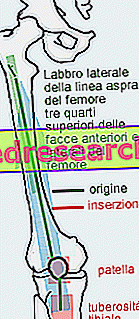Fractionation is a physical process performed on a fat material in order to separate its liquid components from the solid ones. Thus two (or more) fractions are obtained, each with its own characteristics.

By submitting palm oil to a simple fractionation we will therefore obtain:
- a part of stearin (solid), consisting mainly of saturated fatty acids with a higher melting point, 44-50 ° C, used above all in the cosmetic and food industry (margarine)
- and olein (the liquid part), consisting mainly of monounsaturated fatty acids with a lower melting point, about 10 ° C, used in the gastronomic field for frying.
By complex fractionation, instead, a first olein will be obtained which, refracted, will supply a second stearin very suitable for the production of cocoa butter surrogates.
The fractionation process can take place through the use of detergents or solvents, or more commonly through dry crystallization. Dry splitting is the simplest and oldest process; it includes both winterization and squeezing techniques, and is the most widely used form of fractionation. It - to separate the fractions of an oil - is based on the differences of the melting points and on the solubility of the triglycerides.
Winterization : spontaneous process in which a semi-solid oil left in the cold separates into a solid fraction deposited on the bottom and a liquid fraction in the upper part of the container.
Fractionation by industrial dry crystallization
- the fat is heated to a higher temperature than that of the higher melting points (70-75 ° C for palm oil), then it is slowly cooled.
The cooling process is fundamental for the quality of the final product; briefly, the triglyceride crystals formed during cooling can have different characteristics based on the form of crystallization, α, β and β '. The α form is obtained from the rapid cooling of the fat, is characterized by the lowest melting point and, by heating, it converts first into the β 'form and subsequently into the β form. This last form is obtained from an extremely slow cooling of the fat and is the most stable form (see chocolate tempering).
From the technological point of view the fats where the β 'form is prevalent (eg tallow and butter) are more uniform, opaque, whitish, and with a less compact structure than the predominantly β-shaped fats.
- The β 'shape improves the spreadability of the fat because it traps large masses of small-diameter air bubbles.
- The β shape, on the other hand, is characterized by a grainy, waxy consistency, and incorporates small masses of large-diameter air bubbles (for example, it gives the characteristics of hardness and fragility to chocolate bars).
To stabilize the crystals in the β 'form, palm fat is added (which crystallizes preferentially in this form) or selectively hydrogenated fats, or diglycerides and emulsifiers are added.
- Through slow cooling, a solid cake is obtained consisting of a set of high-melting triglyceride crystals, immersed in the liquid formed by low-melting triglycerides
- Using high pressure filter-presses the filtration of the two phases is obtained: the olein is pushed out of the heterogeneous mixture, leaving the solid fraction (stearin).
Health aspects
Fractionation can be considered an alternative and preferable technique to the hydrogenation of vegetable oils in the production of margarines; however, it leads to a higher concentration of saturated fats (an undesirable aspect) and may involve the use of dubious quality vegetable oils.



